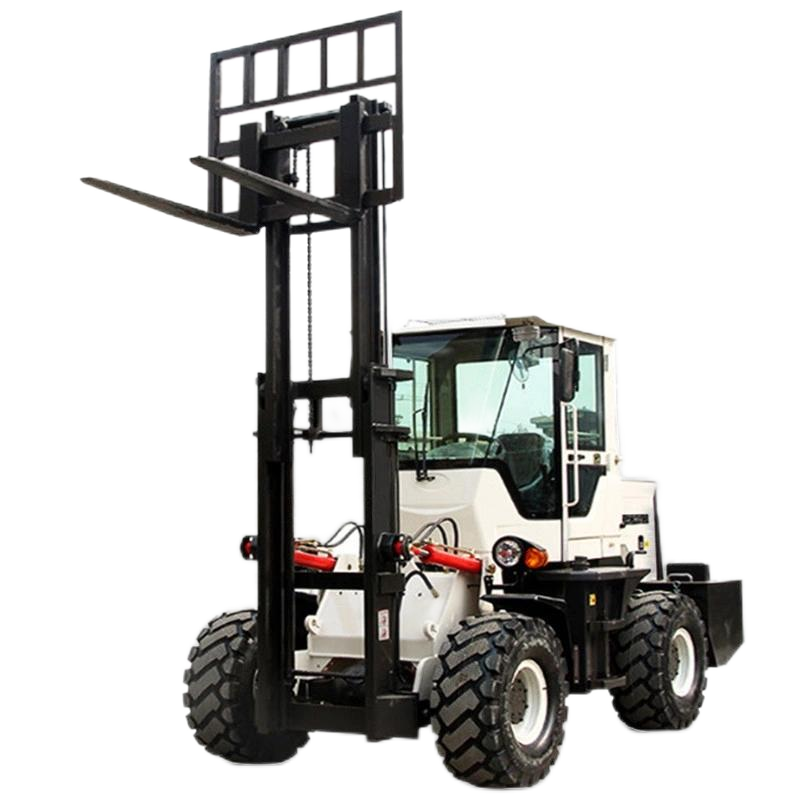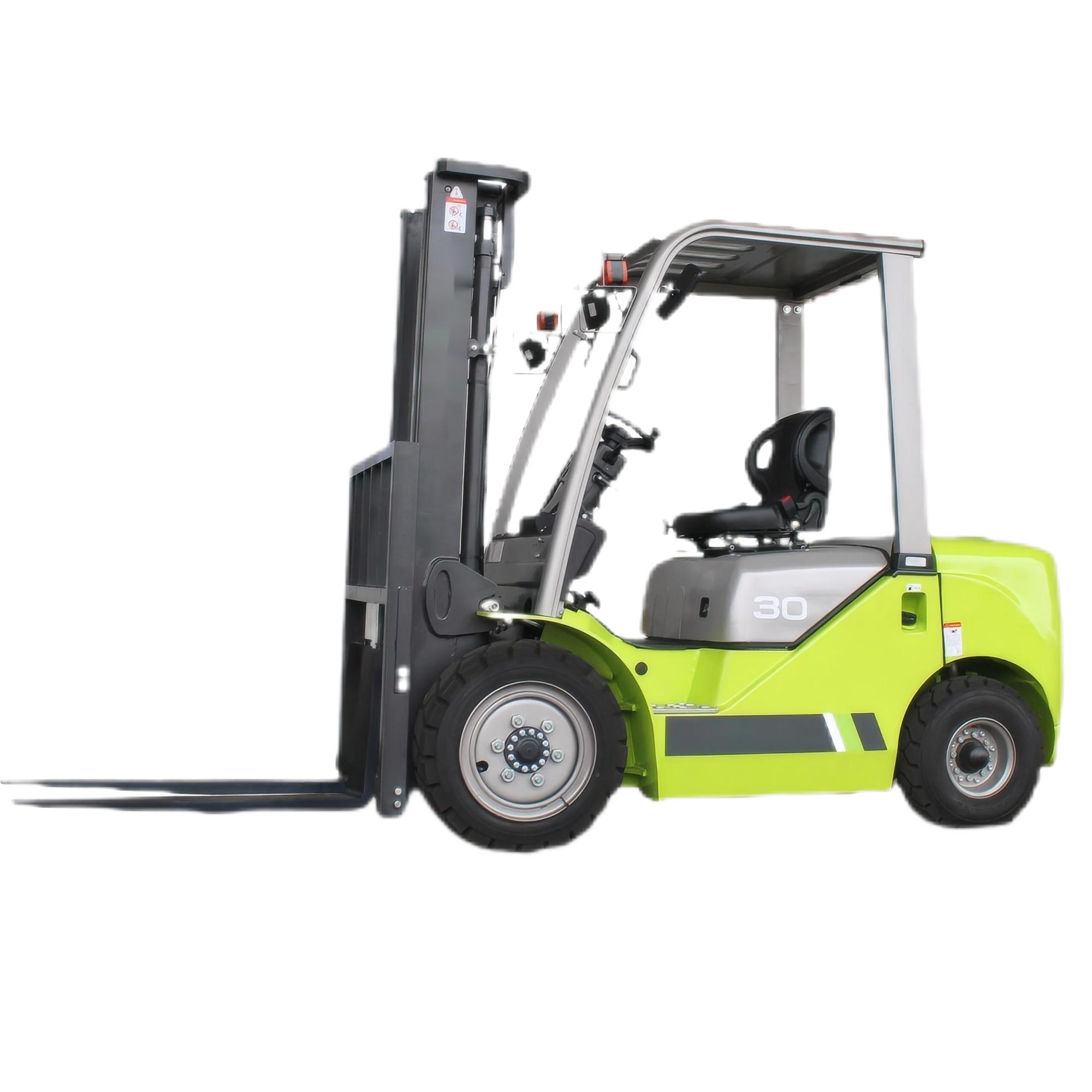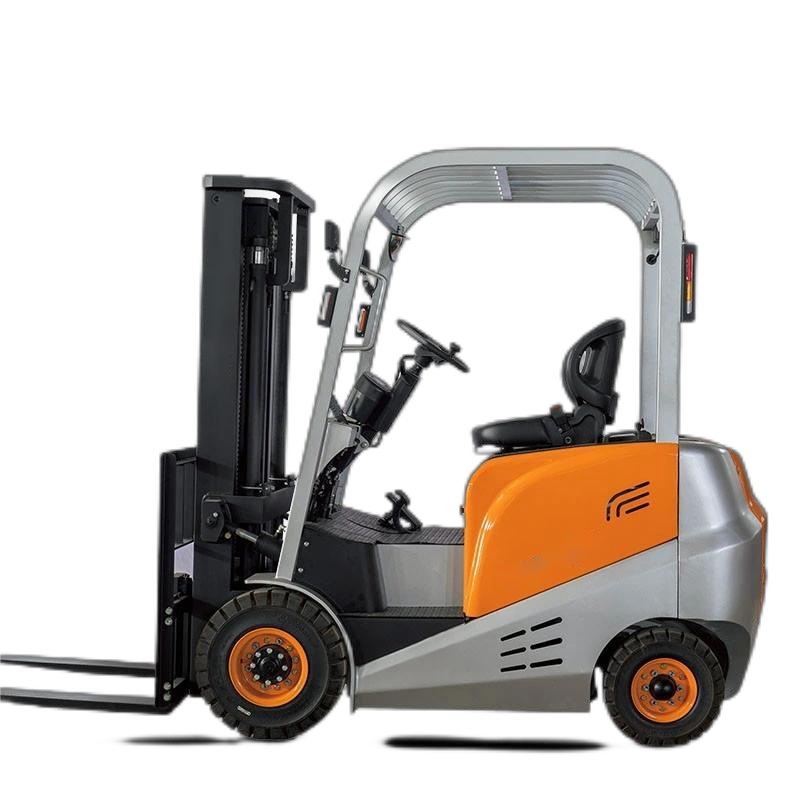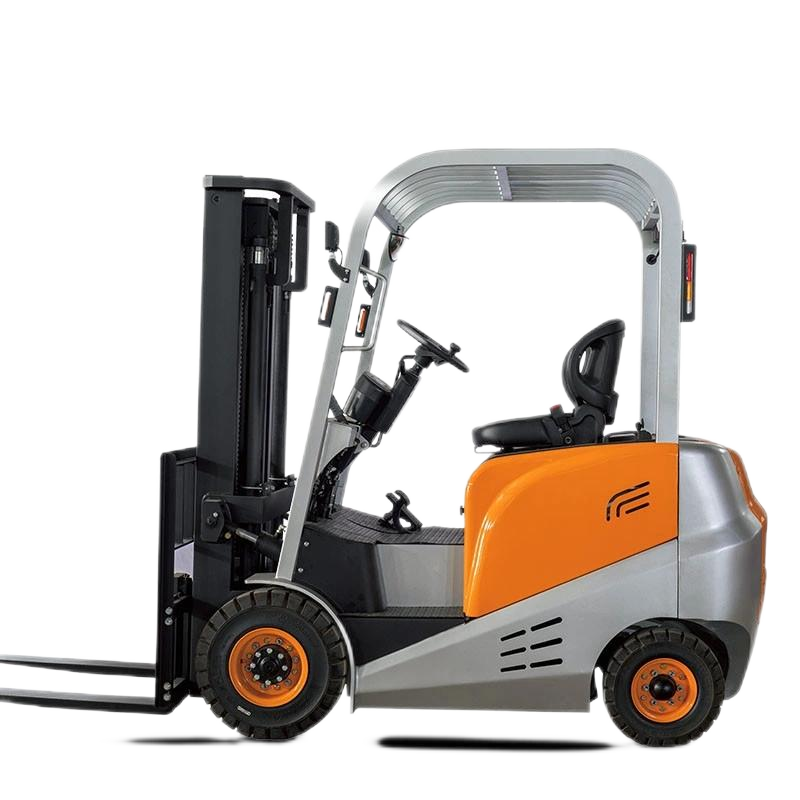When traditional forklifts "struggle to move" on muddy construction sites and "shy away" from rugged mountain roads, off-road forklifts are redefining the possibilities of material handling with their disruptive performance. From transporting steel bars and cement at construction sites, to transferring logs in mountainous forest areas, and to dispatching emergency supplies during post-disaster relief, off-road forklifts, with their hardcore capabilities, have become key tools for numerous industries to reduce costs and increase efficiency.

Compared with ordinary forklifts, can be called "all-terrain conquerors." Their standard large-diameter, wide-base off-road tires have a tread pattern depth of over 25mm, providing twice the grip of ordinary tires. Coupled with a ground clearance of over 350mm, they can easily roll over obstacles as high as 40cm. Test data shows that when operating on a 30° steep slope, the four-wheel drive system with a differential lock can distribute power to the gripping wheels in real time, increasing the self-rescue efficiency by 60%. In contrast, traditional forklifts already have difficulty operating stably on a 15° slope.
The innovative design of the steering system is another highlight. The front axle can swing vertically at an angle of ±12°, and the frame can swing at an angle of ±35°. Even when driving on continuously bumpy roads, the tilt angle of the fork can be controlled within 5°, ensuring the safety of cargo transportation. A case study at a port shows that the cargo tipping accident rate of off-road forklifts equipped with anti-tip sensors is 82% lower than that of ordinary forklifts. At the construction site of a mountainous real estate project in Chongqing, traditional forklifts were at a loss when facing a 1-kilometer-long transportation road with a 28° slope, leading to a surge in material transportation costs. After introducing off-road forklifts, the daily handling capacity increased from 120 tons to 280 tons. With the use of clamping attachments, the efficiency of loading and unloading stone materials increased threefold. The semi-pneumatic tires had zero blowouts in half a year, reducing equipment maintenance costs by 40%.
Winter operations in forest farms in Northeast China are a "nightmare" for material handling. The extremely low temperature of -30°C and snow-covered roads make it difficult for ordinary forklifts to operate. A forestry company used off-road forklifts equipped with low-temperature starting devices and log grapples, and the daily log transfer volume exceeded 500 cubic meters. When operating at an altitude of 2,000 meters, the power of the turbocharged engine only decreased by 3%, which is significantly better than the 20% decrease rate of ordinary engines.
During the severe floods in Henan, a rescue team used off-road forklifts to operate continuously for 72 hours. In knee-deep floodwater and sludge, they successfully moved 12,000 sandbags and opened up key rescue passages. The anti-rollover frame and fully enclosed cab provided round-the-clock protection for the operators, making the off-road forklifts "steel guardians" in emergency rescue and disaster relief.
Our off-road forklifts adopt military-grade welding technology. The torsional strength of the frame is 1.5 times the industry standard, and there is no structural deformation after 1,000 consecutive hours of operation. The transmission system offers three configurations: mechanical, hydraulic, and hydrostatic, meeting the needs of different working conditions. The braking system provides "triple protection" — wet brakes + disc brakes + independent hand brakes, ensuring that the braking distance is reduced by 30% when driving downhill with a full load.









